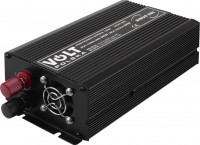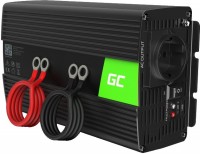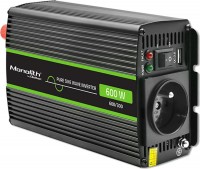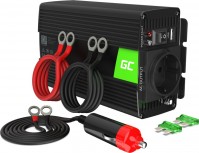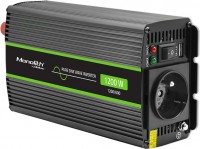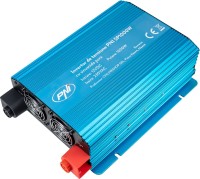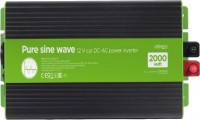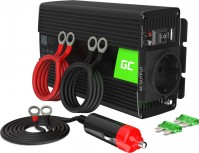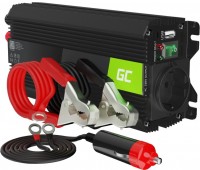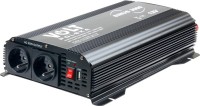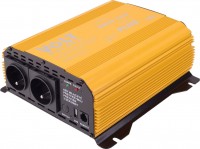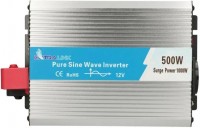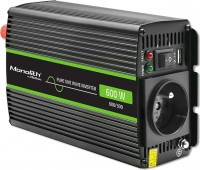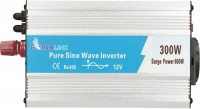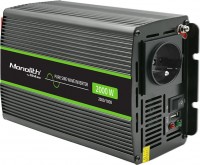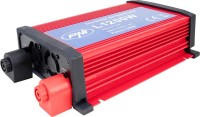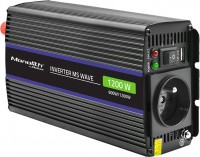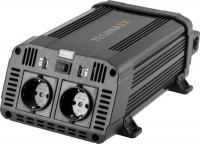Five autoinverters with pure sine wave for backup power supply of the boiler
Niezależnie testujemy rekomendowane przez nas produkty i technologie.

A comparison of the characteristics of the models from the review is given in the summary table of autoinverters with pure sinusoidal output voltage. The entire range of automotive inverters is presented in the corresponding section of the catalog. “How to choose a car inverter for creating autonomous power supply systems from a car battery” - read the material of the same name.

The Volt Polska Sinus 600 inverter is suitable for road trips and at home. The device is designed to power delicate electronics with 230 V alternating voltage from car batteries or the car's cigarette lighter socket.
A distinctive feature of the model is its pure sinusoidal output voltage - the same as in a household electrical network. Sine wave voltage is best suited for powering sensitive electrical appliances, such as boiler control electronics, refrigerator or air conditioner compressors, power tool motors, etc.
Volt Polska Sinus 600 pulls a rated load of about 300 W, maximum peak power is up to 600 W (in short-term mode). In operation, the inverter boasts high efficiency at full load - 92%. This means that the user has the right to count on a minimum of losses during voltage conversion. The inverter is connected directly to the battery terminals using “crocodiles”; however, it is also possible to connect it to the vehicle’s on-board network through a 12 V cigarette lighter socket.
In terms of connection connectors , on board the auto-inverter there is one 230 V Euro socket and a USB A port with an output voltage of 5 V (for charging gadgets). The built-in cooling system is responsible for maintaining the operation of the device “in a cool mind”. And against all kinds of electrical problems, the inverter provides multi-level protection - it doesn’t care about short circuits, overheating, overload and incorrect connection. Volt Polska Sinus 600 is an easy-to-use and unpretentious auto-inverter model with a pure sinusoidal output voltage.
When traveling by car, away from outlets, or during power outages, the Luxeon IPS-1200S auto-inverter comes to the rescue. It converts the 12 V voltage from a car battery into the usual 230 V - this is the voltage that is found in common use.
The inverter is made in a relatively compact metal case with characteristic stiffening ribs, which serve for better heat dissipation. The device is connected to the battery terminals with supplied alligator wires. In nominal operating mode, the inverter produces up to 600 W of power on a long-term basis, and the possibility of short-term overloads of up to 1200 W allows the inverter to effectively “digest” high starting currents.
The microprocessor control circuit “under the hood” of the model ensures the formation of a perfectly smooth sine wave. This voltage is required by sensitive electronics such as heating boilers, televisions, Hi-Fi equipment, etc. To avoid excessive discharge of the car battery, the Luxeon IPS-1200S provides an audible signal when the battery is low.
In general , autoinverter safety systems include protection against short circuits and overheating. In terms of connection ports, the model has nothing special to boast about - a single 230 V socket is provided at the user’s disposal, and that’s all. However, the inverter performs the assigned duties with a solid “five”, and if necessary, other devices can be connected to it through a conditional “tee”.
The assortment of the Chinese brand BASEUS includes many mobile and car accessories. In the automotive aftermarket segment, the Super Si Power Inverter 500W EU/CN looks very attractive, which can be used to power 230 V devices from the car’s on-board network or directly from the car battery.
The model will come in handy both on long road trips and at home in case of power outages. The inverter efficiently converts 12-volt DC into 230-volt pure sine wave AC to power sensitive electronics (such as boiler controls). When connected directly to a car battery using crocodiles, the device pulls a load with a total power of up to 500 W. And if you connect the inverter through the cigarette lighter socket, an output power of up to 150 W is provided.
There are two universal sockets on the front panel of the auto-inverter housing. You can also see a USB A connector with support for Quick Charge 3.0 fast charging and a USB Type C port with charging using the Power Delivery protocol. Battery voltage can be monitored using the built-in info display to avoid over-discharging the battery.
The model is assembled in a durable compact case with dimensions of 201x90x46.5 mm and a weight of about 600 g. Also, BASEUS Super Si Power Inverter 500W EU/CN supports BPSII technology, which is responsible for automatically detecting connected equipment to ensure the supply of the most suitable current and voltage parameters. Finally, a 9-level protection system protects the inverter from overheating, overload, overcurrent, short circuit and other electrical misfortunes.

The EnerGenie EG-PWC-PS500-01 inverter is designed for direct connection to a car battery, for which it is supposed to use a supplied 80-centimeter long cable with ring terminals.
The terminal connection method is considered the most reliable because it ensures tight contact. From the inverter you can power any electronics with a pure sinusoidal voltage of 230 V. The main thing is that the total load power does not exceed 500 W in the long-term operation of the converter. On a short-term basis, the EnerGenie EG-PWC-PS500-01 can handle peak connection power of up to 1000 W (this is useful for starting electric motors, during which starting currents significantly exceed the rated ones).
The model boasts a high voltage conversion efficiency (about 92%), the presence of a built-in cooling fan on board and an LED indication of the operating status. Connection to the inverter of consumers is carried out through one socket with a voltage of 230 V or through the USB A port. At full load, the device remains operational in the temperature range from -10 ° C to +40 ° C. And in half power mode it can be operated at ambient temperatures up to +60 °C.
To guard the trouble-free operation of the auto-inverter , protection systems against overload, overheating, short circuit and reverse polarity are installed. Optionally, the model is equipped with a remote control, but it is not supplied as standard. The inverter is assembled in a housing made of plastic and aluminium, weighing just under 2 kg. It fits perfectly into the concept of “Creating autonomous power supply systems from a car battery,” which is described in detail in the article of the same name.
Almost all the ins and outs of this inverter from Green Cell can be determined by the detailed model name. The device converts 12-volt DC to 230-volt AC, has a power rating of 500 watts and handles peak load surges of up to 1000 watts, and behind the Pure Sine box is a pure sine wave.
Pure sine as an output signal is a smooth voltage without sudden changes, as close as possible to the parameters of conventional sockets. Delicate electronics and household appliances crave this power, otherwise there is a risk of failure of voltage-sensitive equipment. The inverter will be an excellent purchase for backup power supply to a heating boiler, laptop and workplace in general.
Green Cell Car Power Inverter 12V to 230V 500W/1000W Pure Sine was equipped with one standard socket with an output voltage of 230 V and an additional USB port, which is convenient to use for charging mobile gadgets. Also on the front panel of the case were placed an on/off button and contacts for connecting an inverter. With one complete cable it can be connected to the battery terminals using alligator clips, while the second wire serves to supply 12 V on-board power from the car lighter socket.
Correct operation of the inverter is ensured thanks to built-in protection systems against overheating and reverse polarity. At the same time, the model has a number of means for overvoltage protection. The auto-inverter weighs a little more than 1 kg - the device takes up minimal space in the trunk of the car and is easy to carry when forays into nature. When using the inverter at home, it also does not require extensive space for placement.
Artykuły, recenzje, przydatne porady
Wszystkie materiały











